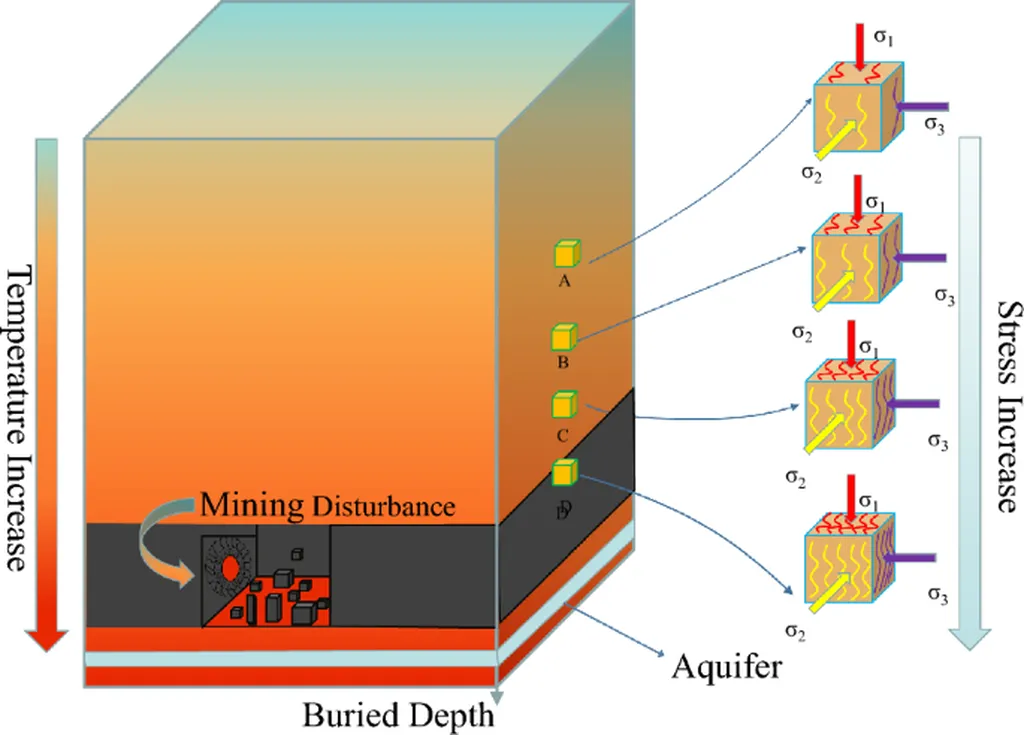In the vast western mining regions of China, where coal seams lie beneath thick layers of rock, engineers and scientists are grappling with the challenges of extracting this vital energy resource. A recent study published in the Journal of China University of Mining & Technology (矿业科学学报) sheds new light on the complex behavior of overburden rock during high mining operations, offering insights that could reshape mining practices and improve safety and efficiency.
The research, led by REN Zhaopeng from the School of Energy and Mining Engineering at China University of Mining & Technology-Beijing, focuses on the 8.8-meter-high longwall face of Shangwan Coal Mine. This extremely high mining scenario presents unique challenges, particularly in understanding how the overburden rock fractures and moves during extraction.
“Our study reveals that the damage height of overlying rock develops in a ‘stepwise’ manner,” explains REN. This finding is crucial for predicting the behavior of rock layers above the coal seam, which can impact mining operations and safety. The research identifies a “three-zone” fracture mode in the overlying rock, a phenomenon that had not been fully understood in such extreme mining conditions.
One of the most significant findings is the formation of a “masonry beam” structure in the primary key strata, which restrains the conduction of mining damage. This discovery could have profound implications for mining practices, as it suggests that certain rock layers can act as natural barriers, reducing the impact of mining on the surface.
“The subsidence of overlying rock shows a non-linear decrease with the decrease of burial depth,” REN notes. This insight is particularly valuable for predicting surface movements and ensuring the stability of mining operations. The study also found that the surface movement is uniform with the bending of thick and soft rock layers, with a subsidence coefficient of 0.58. This information can help miners anticipate and mitigate potential hazards, improving overall safety.
The commercial impacts of this research are substantial. By understanding the behavior of overburden rock, mining companies can optimize their extraction processes, reduce costs, and enhance safety. This knowledge is particularly relevant in the western mining areas, where thick overburden and complex geological conditions pose significant challenges.
As the energy sector continues to evolve, the insights from this study could shape future developments in mining technology and practices. By leveraging advanced modeling and field measurement techniques, researchers like REN are paving the way for more efficient and safer mining operations.
In an industry where every detail matters, this research offers a glimpse into the intricate world of overburden rock behavior, providing valuable insights that could transform the way we extract and utilize our vital energy resources. As the mining sector continues to innovate, the findings from this study will undoubtedly play a crucial role in shaping the future of energy extraction.

